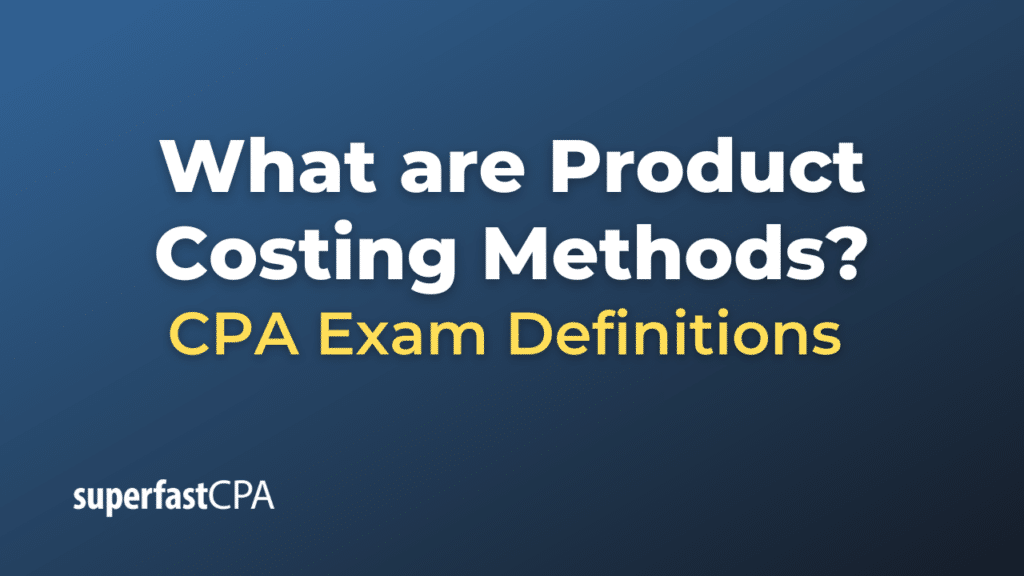Product Costing Methods
Product costing methods are the techniques or strategies that a company uses to allocate its total production costs to individual units of product. There are several different methods that a company could use, each of which might be appropriate in different circumstances. Here are some of the most common ones:
- Job Costing: This method is used when products are made based on specific customer jobs. Each job has its own unique production requirements, and costs are tracked separately for each job. This is common in industries such as construction or custom manufacturing.
- Process Costing: This method is used when a company produces large numbers of identical or similar products. The costs of these production processes are averaged over the number of units produced, giving a per-unit cost. This is common in industries like oil refining or food processing.
- Activity-Based Costing (ABC): This is a method that assigns costs to products based on the activities that go into their production. The cost of each activity required to produce a product (like design, order processing, material handling, machine setup, etc.) is assigned to that product.
- Standard Costing: In this method, costs are assigned to products based on a pre-determined standard. The actual costs are then compared to these standard costs to measure the performance of cost control.
- Direct Costing: Only direct costs such as direct materials and direct labor are assigned to products. Indirect costs are not allocated to products and are treated as period expenses.
- Absorption Costing: Also known as full costing, this method assigns all production costs to products, both variable and fixed, direct and indirect.
Choosing the right product costing method is crucial as it affects how you price your products, bid on contracts, identify inefficiencies, and make decisions about which products to sell or discontinue. It’s also important for financial reporting and tax purposes.
Example of Product Costing Methods
Let’s explore an example for each of the mentioned product costing methods:
- Job Costing: A custom furniture manufacturer receives an order for a specially designed table. The company tracks all costs (labor, materials, overhead) associated with this specific job to determine the total cost of the project. If the materials cost $500, labor costs $300, and overhead costs $200, the total cost of the job is $1,000.
- Process Costing: A petroleum refinery produces thousands of gallons of gasoline in a continuous process. The cost of the crude oil, labor, and overhead are spread over all the gallons produced. If the total cost is $1,000,000 and the company produced 500,000 gallons of gasoline, the cost per gallon is $2.
- Activity-Based Costing (ABC): A toy manufacturer has several activities, such as design, material procurement, machine setup, assembly, and packaging. Costs are tracked for each of these activities and then allocated to each toy based on the amount of each activity it uses.
- Standard Costing: A bike manufacturer determines that the standard cost to produce one bicycle is $150 based on predetermined material, labor, and overhead rates. At the end of the month, the actual cost is compared with the standard cost to identify variances and understand if the production was cost-efficient.
- Direct Costing: A clothing manufacturer assigns only the direct material (fabric, buttons, zippers) and direct labor (wages of tailors) to the cost of a dress. The indirect costs such as factory rent and utilities are treated as period expenses and not allocated to individual dresses.
- Absorption Costing: A car manufacturer assigns all production costs, including direct materials (steel, rubber, etc.), direct labor (wages of assembly workers), and both variable and fixed overhead (factory rent, utilities, equipment depreciation, etc.) to the cost of each car produced.













